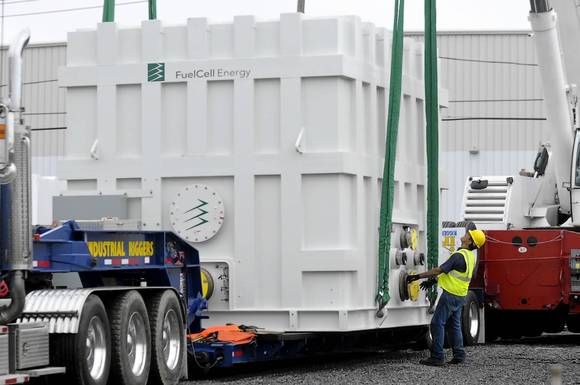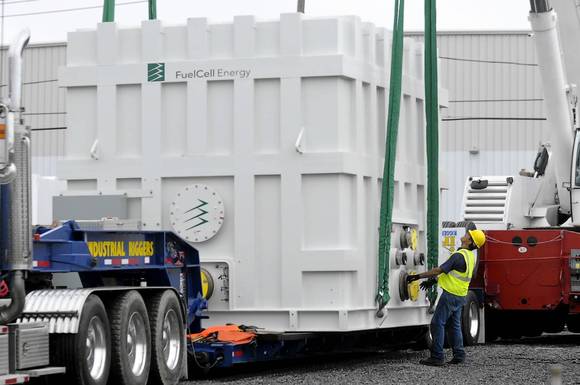Carbonate fuel cells may be one answer to capturing CO2 from the atmosphere. The manufacturer is FuelCell Energy, a company located in Danbury, Connecticut. Carbonate fuel cells normally using CO2 created ions for conduction in a continuous loop. But they can be altered so that the loop is interrupted and the CO2 can be emitted for the purpose of capture.
Where would you use a carbonate fuel cell as a carbon capture device? Placed to siphon off gases in the exhaust of coal-fired power plants, a carbonate fuel cell could take CO2 from the air stream and concentrate it to about 70% by volume. It would then pressurize the gas and store it. The company believes that such a process could capture CO2 at a cost of between $20 and $30 per ton.
The captured CO2 has commercial application. It can be used in greenhouse operations, or for enhancing oil recovery from depleted wells. In the case of the latter the fuel cells would serve a double purpose. Gaseous byproducts from oil extraction would feed the carbonate fuel cell allowing it to capture the CO2 which then would be pumped into the depleted reservoir to further enhance oil recovery while permanently sequestering the gas underground.
Compared to other technologies used for carbon capture and storage, carbonate fuel cells look like a pretty good option but the current company products need to get much bigger. Right now a typical carbonate fuel cell generates a few megawatts of power. You can see one of FuelCell Energy’s biggest products in the picture below. This one is being delivered to the Energy Cell Park in Bridgeport, Connecticut where it will be used to generate power for the state utility. The cell ways 50,000 kilograms (110,000 pounds). But this baby isn’t big enough for the kind of fuel cell needed by power utilities and oil fields to capture CO2.
FuelCell Energy, however, is working to scale the technology beyond the 14.9 Megawatt stack you see in the picture and they are doing this with cooperation and $2.4 million in funding from the U.S. Department of Energy. That’s because the power industry will require a carbonate fuel cell capable of generating hundreds of Megawatts to make it commercially viable and to keep the cost of carbon capture within the $20 to $30 per ton range.










